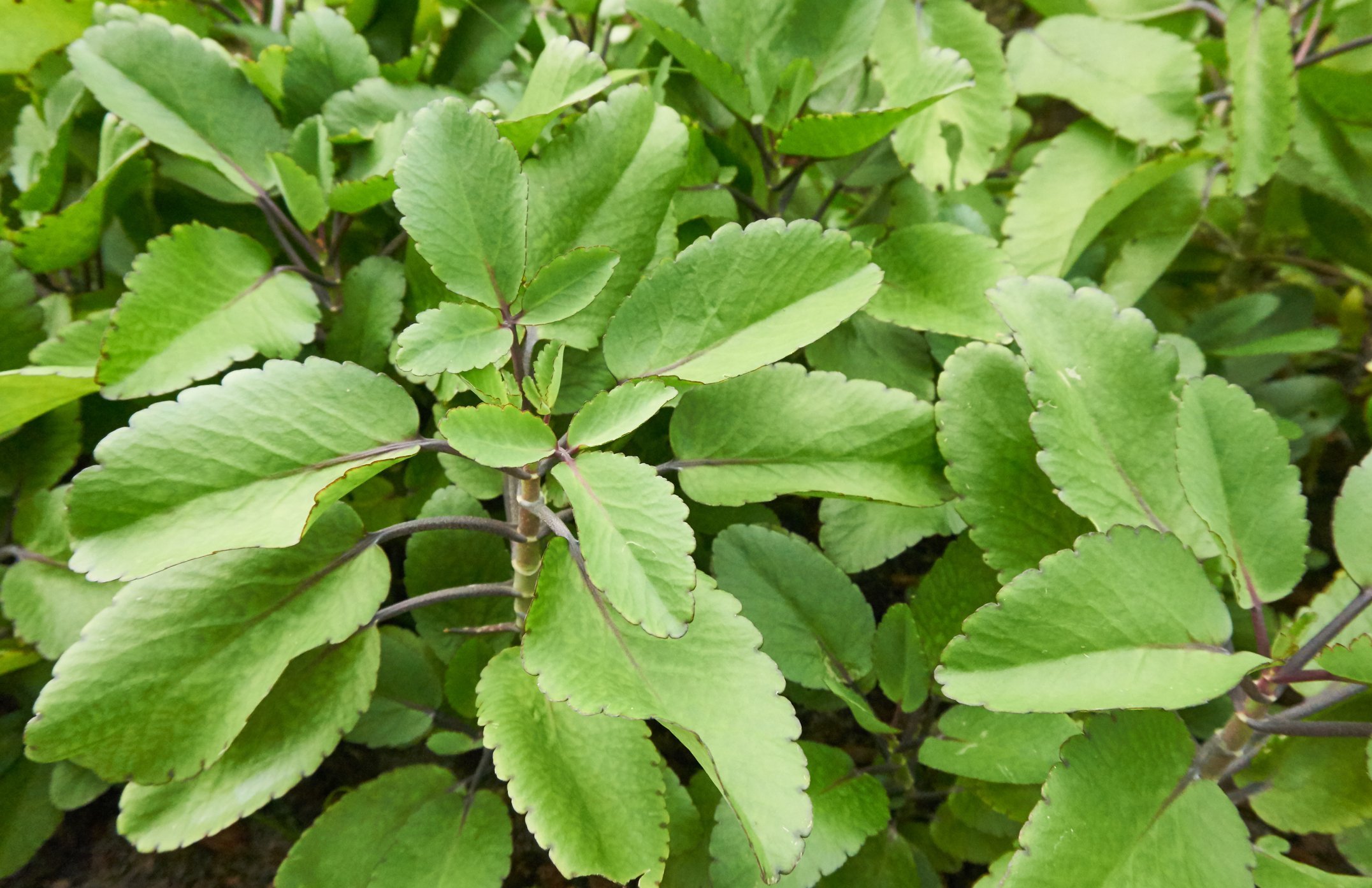DEPARTMENT OF BOTANY
MEDICINAL PLANTS
Bryophyllum pinnata (Lam.) Oken
Bryophyllum pinnata, commonly known as “air plant”, “miracle leaf”, “Katakaat” or “Patthar Phool”, is a succulent plant from the family Crassulaceae. It is native to tropical and subtropical regions of Africa, Asia, and Madagascar but is now widely distributed and cultivated around the world due to its medicinal properties and easy-to-grow nature.
Botanical Details:
• Scientific Name: Bryophyllum pinnata (Lam.) Oken
• Family: Crassulaceae
• Genus: Bryophyllum
• Species: pinnata
Common Names:
• English: Air Plant, Miracle Leaf, Life Plant, Kalanchoe, Maternity Plant
• Malayalam: Elamulachi
• Tamil: ranakkalli
Synonyms:
• Kalanchoe pinnata (Lam.) Pers.
• Bryophyllum calycinum Salisb.
• Bryophyllum tubiflorum (Sav.) Jacq.
Botanical Description:
o Bryophyllum pinnata is a succulent, perennial shrub that typically grows 30–60 cm (12–24 inches) tall, but can sometimes reach up to 1 meter (3 feet) in height under favorable conditions.
o The plant has a woody base and fleshy, thick stems, which store water, allowing it to survive in dry conditions.
o The leaves are large, oval-shaped, and have toothed margins. They are green and are usually waxy and succulent in texture.
Uses:
1. Medicinal Uses:
o Bryophyllum pinnata is widely known in traditional medicine for its numerous healing properties, and it has been used for centuries in India, Africa, and Caribbean countries.
o Wound Healing: The leaves of Bryophyllum pinnata are used to treat wounds, cuts, and bruises. Fresh leaves are crushed and applied as a poultice to promote quick healing and reduce inflammation.
o Anti-inflammatory and Analgesic: The plant is known to have anti-inflammatory and pain-relieving properties. It is used to treat conditions such as arthritis, rheumatism, and muscle pain.
A paste of fresh leaves is often applied to swollen joints and painful areas for relief.
o Respiratory Issues: Bryophyllum pinnata has been used to treat respiratory problems like asthma, cough, and bronchitis. The leaves are often used in decoctions or infusions to relieve chest congestion and promote easier breathing.
o Stomach Disorders: The plant is known for its digestive benefits, especially in treating gastritis, constipation, and stomach ulcers. Some cultures use it to aid in detoxification of the body.
o Antioxidant and Antimicrobial: The leaves contain compounds with antioxidant properties, which help fight free radicals and may reduce cellular damage. The plant also has antimicrobial activity against a variety of pathogens.
o Diabetes: Some studies suggest that Bryophyllum pinnata may have antidiabetic properties by helping to regulate blood sugar levels.
o Pregnancy: In some cultures, the leaves of the plant are used to promote safe childbirth and easy labor. However, there are concerns regarding its safety during pregnancy, so caution should be exercised.
2. Culinary Uses:
o While not commonly used as a food source, in some traditional cultures, young leaves and shoots of Bryophyllum pinnata are eaten as vegetables.
o The leaves are sometimes steamed or stir-fried, but they should be consumed cautiously, as their high oxalate content can be problematic in large quantities.
3. Cosmetic Uses:
o The plant’s leaves are used in some natural skincare products. The leaf juice is believed to have healing properties for treating burns, cuts, and skin irritations.
o Some also use the plant in hair care to promote healthy hair growth or to treat scalp conditions like dandruff.
4. Ornamental Uses:
o Bryophyllum pinnata is sometimes grown as an ornamental plant due to its attractive foliage and ability to propagate easily.
o It is also sometimes used as a potted plant or ground cover in tropical gardens.
